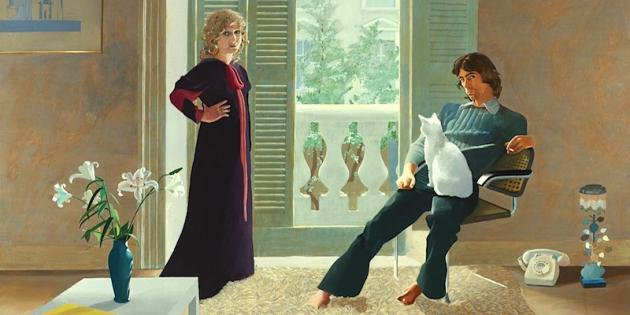A new chronological presentation of the world’s greatest collection of British art, opened at Tate Britain yesterday. In a surprise move, the gallery has removed the acres of explanatory wall text, allowing the public to enjoy the art works for the sake of it.
Visitors may now experience the national collection of British art in a continuous chronological display – a walk through time from the 1500s to the present day. BP Walk through British Art will comprise around 500 artworks over a newly configured sequence of over 20 galleries. The displays include works by major artists such as Francis Bacon, John Constable, William Hogarth, Thomas Gainsborough, George Stubbs, J.M.W. Turner, Gwen John, Stanley Spencer, L.S. Lowry, John Everett Millais, Bridget Riley, Damien Hirst, David Hockney, and Rachel Whiteread.
The exhibition offers an extensive survey of art in Britain over the past 500 years. As it unfolds room by room, visitors will encounter well known favourites from The Cholmondeley Ladies c.1600–10, Sir Joshua Reynolds’s Colonel Acland and Lord Sydney: The Archers 1769 and Lucian Freud’s Girl with a Kitten 1947, to works made more recently such as Jake and Dinos Chapman’s The Chapman Family Collection 2002 and Chris Ofili’s No Woman, No Cry 1998 and Lynette Yiadom-Boakye’s 10pm Saturday 2012. These will be interspersed with less familiar artists including Mary Beale (1633–1699), George Dawe (1781–1829), Nathaniel Hone (1831–1917), Mary Sargent Florence (1857–1954), Evelyn Dunbar (1906–1960) and Jann Haworth (born 1942).
A chronological approach offers a fresh perspective highlighting surprising juxtapositions of art created within a few years of each other but rarely associated. An early Gainsborough landscape hangs side by side with Hogarth’s satires. The frolicking female nudes of Alma Tadema’s A Favourite Custom 1909, the epitome of Victorian revivalism, are seen next to Walter Sickert’s gritty modernist icon La Hollandaise 1906. Often separated when hung by movement or genre, the chronological presentation allows a more neutral view of the range of art being produced at any one historical moment to emerge.
This month will also mark the launch at Tate Britain of new permanent galleries devoted to two of the greatest figures in British art: William Blake and Henry Moore. Each of these artists, along with J.M.W. Turner, have a special historic relationship with Tate Britain. The new galleries aim to tell these stories. The Clore galleries continue to be dedicated to J.M.W. Turner with an additional focus on Constable.
A substantial display of Henry Moore’s work will now have a permanent presence in London. These new dedicated Moore galleries open with displays which focus on the monumental public commissions of one of Britain’s most important 20th-century artists and on his relationship with Tate. Highlights will include dramatic large-scale pieces such as Recumbent Figure 1938, and Reclining Figure: Festival 1951 shown alongside maquettes and drawings.
Celebrating the life and legacy of the visionary artist William Blake (1757–1827), the new permanent dedicated Blake room will showcase a changing selection of works from the Tate’s unparalleled collection of paintings, watercolours and drawings including famous works such as The Ghost of a Flea c.1819–20 and Newton 1795/c.1805. To mark the launch, new research on landscapes in Blake will form a temporary special display on an overlooked aspect of his art.
Alongside the chronological circuit around the outer perimeter of the galleries, a new series of seasonal Spotlight collection displays form the inner core of the collection displays. These displays, offer more depth on particular artworks, artists or themes. Highlights of this new and regularly changing programme include a room exploring Constable’s The Cornfield and another on the impact of painting on early cinema. Further displays include The Image of the British School, which showcases some of theearliest acquisitions from Tate’s collection, and one on the role of Basic Design in art education. There are also BP Spotlights on recent artists including Keith Arnatt, Rose Wylie and an ARTIST ROOMS: Douglas Gordon display.
New displays of temporary exhibitions which offer a transhistorical approach to Tate’s collection of British art will be housed in the final rooms. The current Exhibition is Looking at the View, which explores the ways British artists have framed the view in their work.

